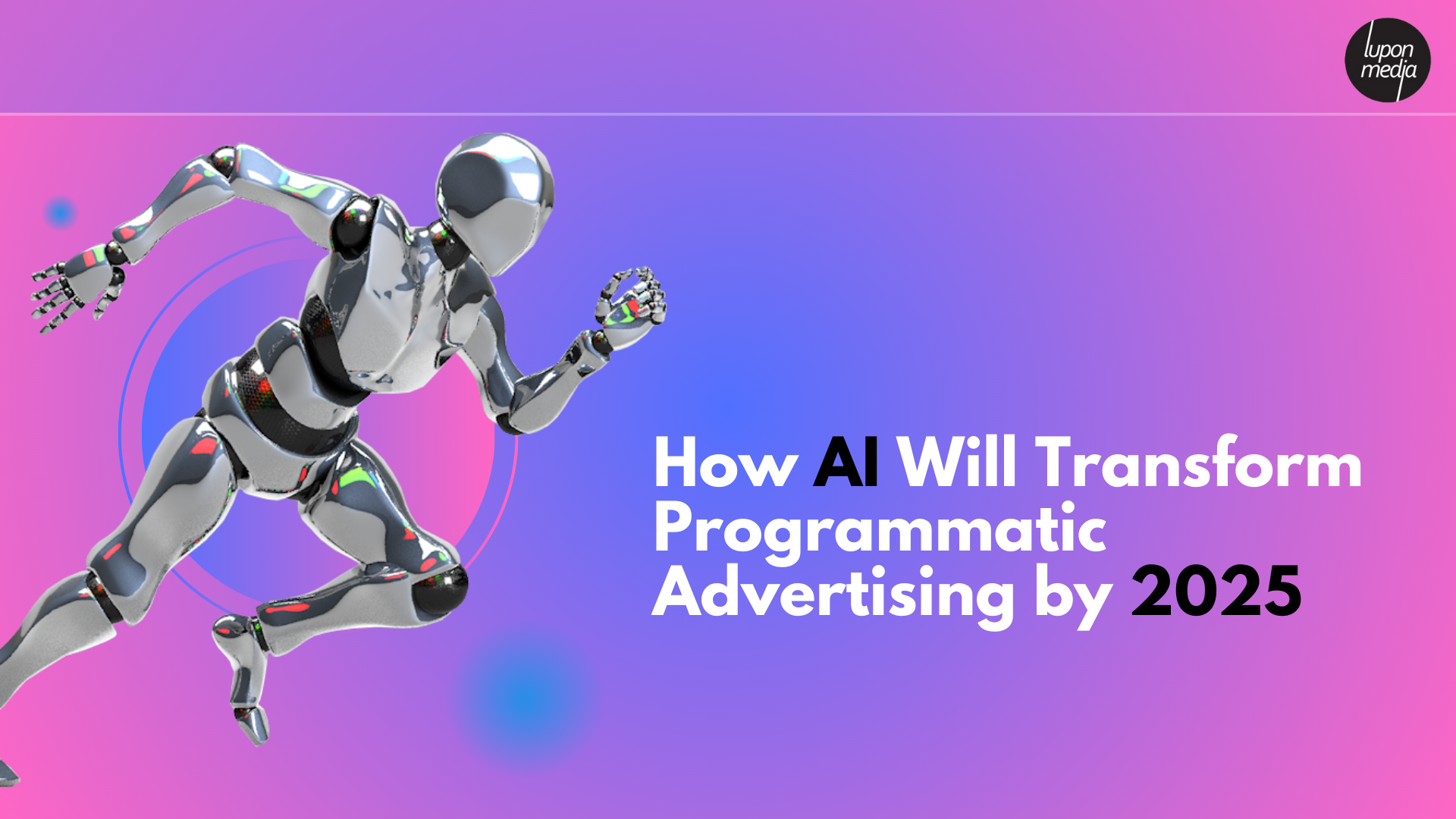As we approach 2025, programmatic advertising continues to evolve, driven by AI and machine learning innovations. These technologies are not only transforming how advertisers target audiences but are also optimizing revenue streams for publishers in an increasingly competitive landscape. This article explores how AI and machine learning will shape programmatic advertising by enhancing targeting precision, leveraging first-party data, optimizing pricing strategies, and ensuring publishers get their fair share in an open marketplace.
1. AI in Ad Targeting: Precision Meets Personalization
AI’s ability to analyze large volumes of data in real time is making ad targeting far more precise than ever before. Advertisers can now leverage AI algorithms to strike the perfect balance between frequency and reach, ensuring they aren’t overwhelming their audience with too many ads or missing potential conversions.
- Targeting the Right Audience: AI-driven systems analyze behavioral, demographic, and contextual data to place ads in front of the right audience at the right time. Machine learning continuously optimizes predictions based on real-time feedback.
- Balancing Frequency and Reach: AI tools allow advertisers to maintain the delicate balance between showing ads often enough to drive action and expanding reach to new audience segments, increasing engagement and ROI.
2. Leveraging First-Party Data and the Role of DMPs in a Changing Landscape
Although Google has delayed the removal of third-party cookies, the advertising industry is shifting toward privacy-centric solutions. While third-party data will continue to play a role in the near future, the value of first-party data is growing rapidly. AI can unlock the full potential of this data by offering more personalized and privacy-conscious targeting methods. Data Management Platforms (DMPs) powered by AI will integrate first-party data from various sources to create highly targeted segments.
- AI-Enhanced First-Party Data: AI can predict customer behaviors, optimize segmentation, and deliver personalized experiences. This helps advertisers reach audiences that are more likely to convert, while respecting privacy regulations.
- Role of DMPs: AI-powered DMPs unify data from multiple touchpoints, building holistic audience profiles that lead to more effective targeting and dynamic optimization across campaigns.
3. Dynamic Pricing Floors: Maximizing Publisher Revenue
For publishers, AI’s ability to adjust pricing dynamically is a game-changer. Using real-time insights, AI systems can set dynamic price floors, ensuring that publishers capture the highest possible revenue per impression without leaving money on the table.
- Dynamic Price Floors: AI evaluates a multitude of variables—audience engagement, historical performance, demand fluctuations—to set a dynamic floor price that reflects the real-time value of an impression. This minimizes underbidding while maximizing revenue for publishers.
- Bidding Algorithms and Optimization: AI-powered bidding algorithms predict which advertisers are likely to offer higher bids based on historical data and audience behavior. This approach ensures that high-value impressions are sold at premium prices.
4. Publishers Getting Their Due in an Open Marketplace
In an open marketplace, transparency and fairness have historically been challenges for publishers. AI is leveling the playing field by giving publishers more control over their inventory, allowing them to compete for premium advertising dollars on equal footing with advertisers.
- AI in Header Bidding: AI enhances header bidding processes by managing requests, optimizing latency, and predicting the highest potential bidder for any given impression. This ensures publishers receive competitive bids from DSPs.
- Reducing Ad Fraud: AI and machine learning algorithms help publishers detect and prevent ad fraud, ensuring that only high-quality, legitimate traffic is monetized. This protects revenue and builds trust with advertisers.
5. AI-Driven Bidding: The Backbone of Programmatic Success
AI-powered bidding algorithms have become more sophisticated, taking into account numerous factors such as user engagement, content relevance, and contextual data to predict optimal bid prices. For advertisers, this means better efficiency in ad spend, and for publishers, higher monetization potential.
- Predictive Bidding: Machine learning models forecast the likelihood of conversions, enabling advertisers to bid strategically on high-value impressions. This minimizes wasted ad spend while boosting the relevance and impact of each ad.
- Real-Time Bidding Optimization: AI adjusts bids in real time based on performance data, ensuring advertisers get the most out of every auction. For publishers, this leads to a more competitive bidding environment and better revenue outcomes.
6. The Role of AI in Balancing Supply and Demand in Programmatic Ecosystems
AI is becoming indispensable in balancing supply and demand in real-time, ensuring that publishers and advertisers get the best value from each transaction. AI can anticipate market trends, forecast demand, and optimize inventory in ways that manual processes cannot achieve.
- Real-Time Demand Forecasting: AI predicts spikes or drops in demand based on external factors such as seasonality or news events, allowing publishers to capitalize on these fluctuations.
- Optimized Inventory Allocation: Machine learning algorithms help publishers allocate inventory in ways that maximize fill rates and CPMs, ensuring high-value inventory is prioritized for premium advertisers.
Conclusion
As we move toward 2025, AI and machine learning will continue to shape the future of programmatic advertising, offering more precision in targeting, smarter bidding and pricing strategies, and new ways for publishers to capture more value. Publishers and advertisers who embrace these technologies will be better positioned to thrive in an increasingly complex and competitive marketplace, driving better results for all stakeholders.
At Lupon Media, we are leveraging AI to help publishers optimize their ad revenue and performance. If you’re looking to enhance your programmatic strategy, reach out to us today to learn how our AI-driven solutions can unlock new opportunities for growth.

